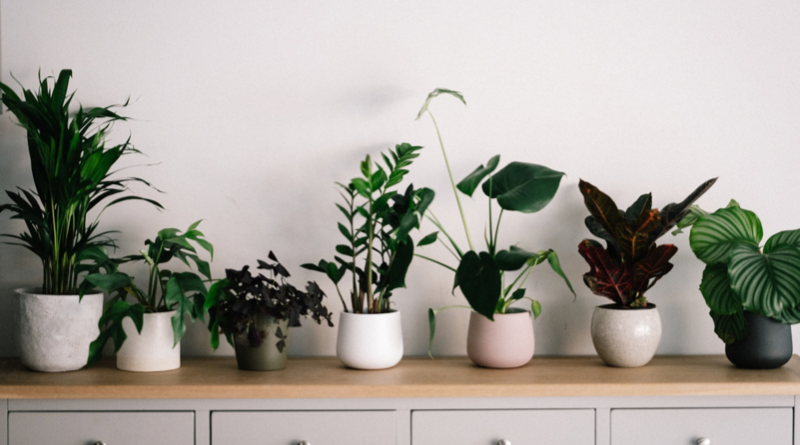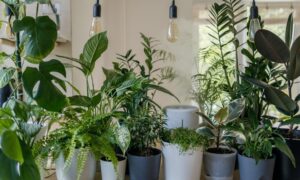We independently research, review, and recommend the best products. If you buy something through our links, we may earn a commission. Learn more.
Whether you’re a budding interior designer or simply want to breathe a bit of life into an old space, picking up a new planter is the perfect place to start. Some might say it’s just as important as selecting the plants themselves!
These 5 tips will make you think differently about indoor plant potting, offering explanations as to what works where and why.
Contents
Grab your tape measure
The size of your planter or pot is not only crucial for the health and growth of your plant, but it also sets a tone for your room.
As a start, ensure the pot is appropriate for the plant’s size by using a ruler or tape to measure the width and depth of the root ball. Add a few inches to find the minimum size of the pot.
If you’re placing the planter on a table or shelf, I‘d recommend choosing one that is no more than 2 inches larger in diameter than the pot of the plant. An oversized planter, while dramatic, sometimes won’t work well for your plant or the space it occupies.
Materials matter
Different materials have unique properties that can affect your plant’s health and appearance.
For instance, clay pots are porous, allowing air to circulate, but they can dry out quickly and are prone to cracking. Plastic pots on the other hand are lightweight and affordable, but may retain too much moisture and prevent proper drainage.
Looking to create a contemporary space? Metal pots are the planter de jour, adding a modern motif to minimalist homes. The only downside is they get very hot and may overheat your plant, so it’s best not to keep them in direct sunlight for too long.
Wood pots are perfect for rustic spaces that want a natural touch; however, bear in mind that they may rot if not properly sealed.
Choose a material that best compliments the decor while ensuring suitability for your plant.
A few suggestions:
- A sleek, ceramic pot can add a chic touch to a minimalist space.
- A rustic wooden planter can bring warmth and texture to a bohemian-inspired room.
Drainage is key
Adequate drainage is essential for the well-being of your plant — after all, if it’s unhealthy, your aesthetic will suffer. Overwatering can lead to root rot and other issues, so make sure the pot has drainage holes or add them yourself if needed.
If you’re using a decorative pot without holes, you can use a plastic pot with holes inside or add a layer of pebbles at the bottom to increase drainage.
Pair your plant with a palette
Like pairing the perfect cheese with a nice wine, your planter should complement the plant it houses.
So, if you have a tropical plant, a colourful pot with bold patterns is the obvious choice. Accentuate your plant’s character. Likewise, if you have a succulent, a minimalist pot with clean lines will draw attention to the plant and create a polished, contemporary look.
Don’t be afraid to mix and match styles, too, but try to create a cohesive aesthetic. For example, a bold and graphic pot can add a pop of colour to a neutral, understated space, while a neutral pot can bring balance to a more visually dramatic room.
Don’t forget the saucer
A saucer is a must for indoor plants, as it will protect your floor or furniture from excess water. If you’re using a pot with drainage holes, choose a saucer that is slightly larger than the pot to catch any excess water. A saucer can also add an extra touch of style to your plant display.
I hope these tips help you choose the perfect planter or pot for your plant! With a little bit of consideration, you can create a beautiful and healthy space for your green friends while also elevating your home’s decor.






